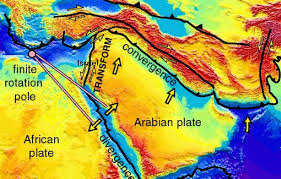Noah's ark and geology
A natural rock structure near Dogubayazit, Turkey, has been misidentified as Noah's Ark. Microscopic studies of a supposed iron bracket show that it is derived from weathered volcanic minerals. Supposed metal-braced walls are natural concentrations of limonite and magnetite in steeply inclined sedimentary layers in the limbs of a doubly plunging syncline. Supposed fossilized gopherwood bark is crinkled metamorphosed peridotite. Fossiliferous limestone, interpreted as cross cutting the syncline, preclude the structure from being Noah's Ark because these supposed “Flood” deposits are younger than the “Ark.” Anchor stones at Kazan (Arzap) are derived from local andesite and not from Mesopotamia. The development of scientific geology had a profound impact on attitudes towards the biblical flood narrative. By bringing into question the biblical chronology, which placed the Creation and the Flood in a history which stretched back no more than a few thousand years, the concept of...



